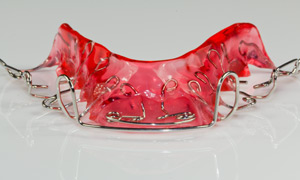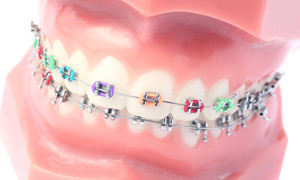Treatment concept
Orthodontic treatment is a very special task that requires a great deal of trust. In order to achieve the best possible outcome, we work with the utmost care, using the latest techniques and materials. Correct treatment starts with a correct diagnosis; only in this way can it end with the satisfaction of our patients. Some keywords for orthodontic treatment are aesthetics, function and stability.
Children and adolescents

Adults

Removable orthodontic devices

The first removable orthodontic devices were Walther H. Coffin’s pliable devices in the early 20th century; over the following years, modifications were continuously made and modern designations were given (such as “Bionator”). Young patients can then prevent their teeth from deteriorating. If they comply with the physician's instructions, they can improve misalignments of the jaw or of the individual teeth. An important advantage is that the patients can clean their teeth when they want and wear the braces more or less “when possible”. Unfortunately, this is also a disadvantage. Even in the preschool years, it may be impossible to wear a brace all the time. Furthermore, due to biomechanical conditions, the efficacy is limited, so that treatment with fixed braces is usually inevitable if optimal orthodontic results are to be achieved.
Fixed orthodontic devices

Surgery

Severe skeletal malocclusions and syndromes require close interdisciplinary cooperation with surgically qualified colleagues and universities. For many years, we have been working with experienced teams of specialists, guaranteeing a problem-free multidisciplinary treatment process, as all our patients would be glad to confirm.
